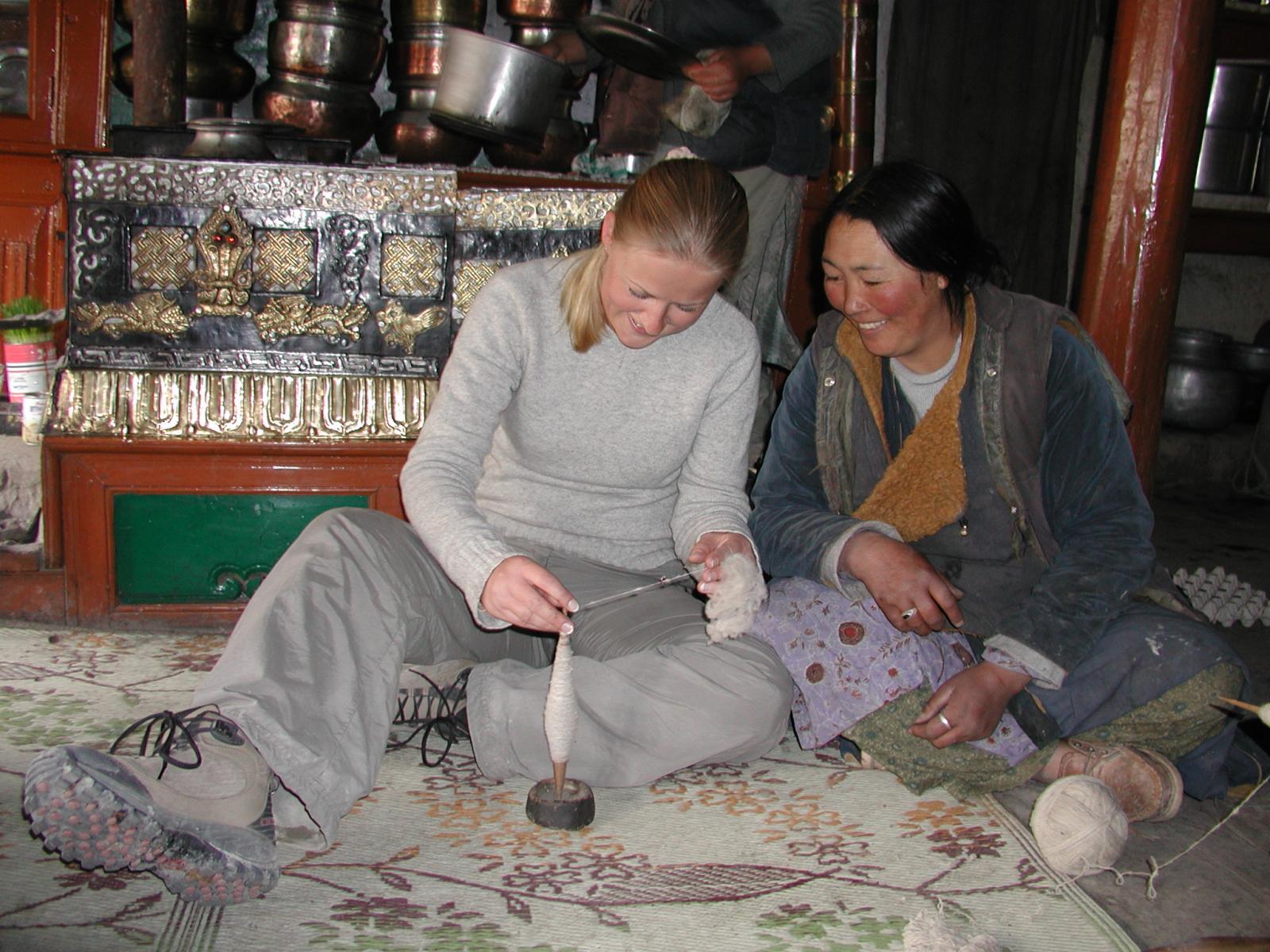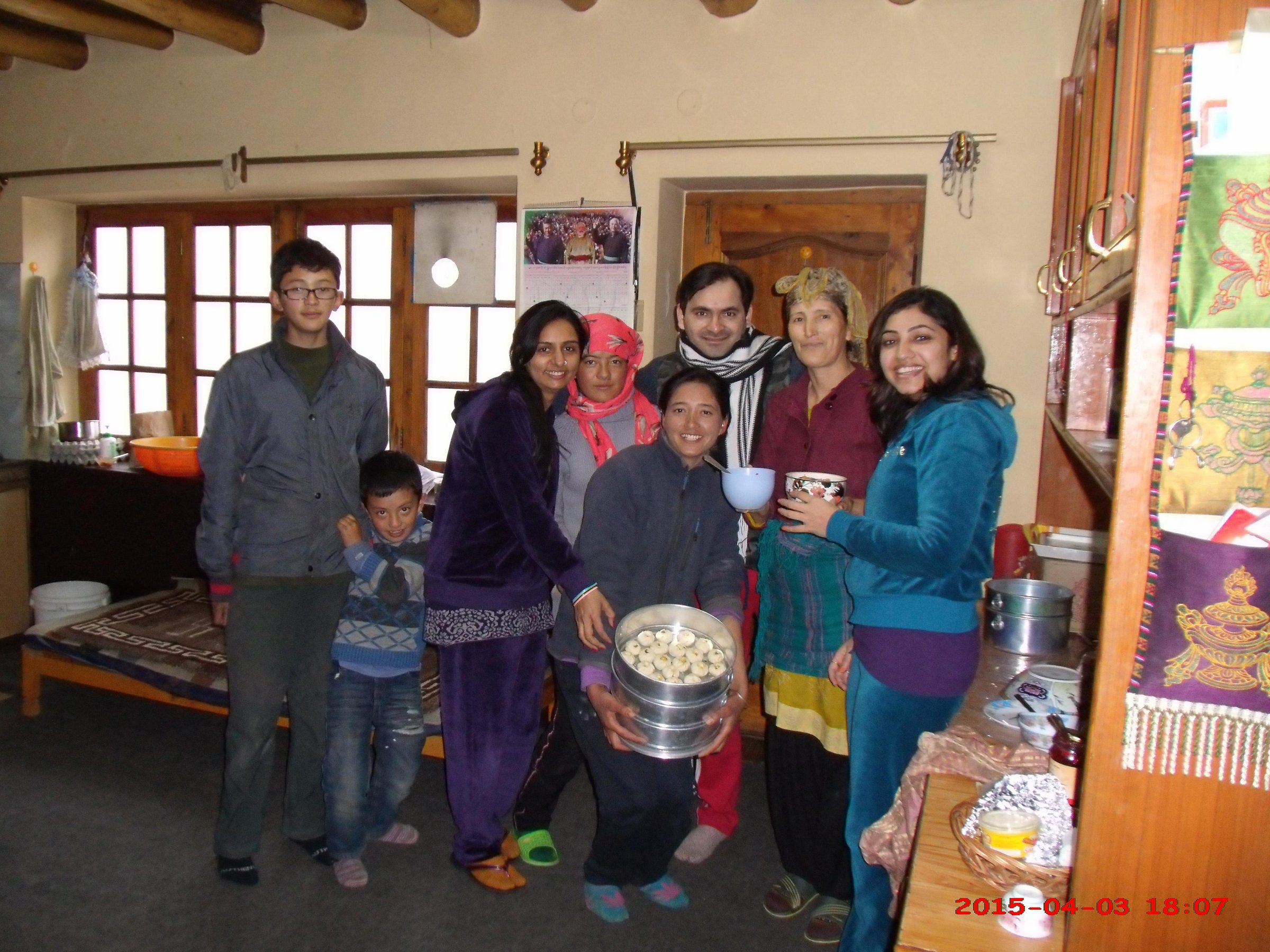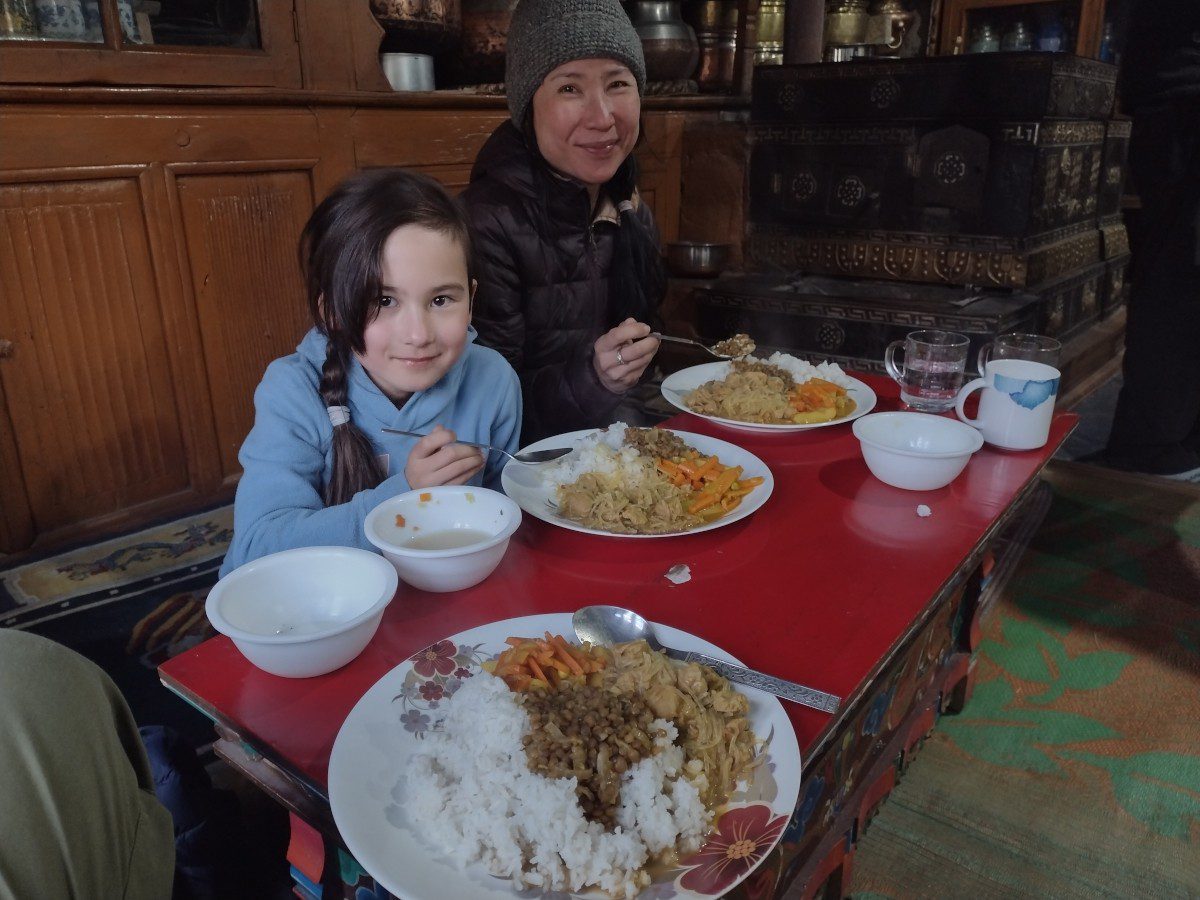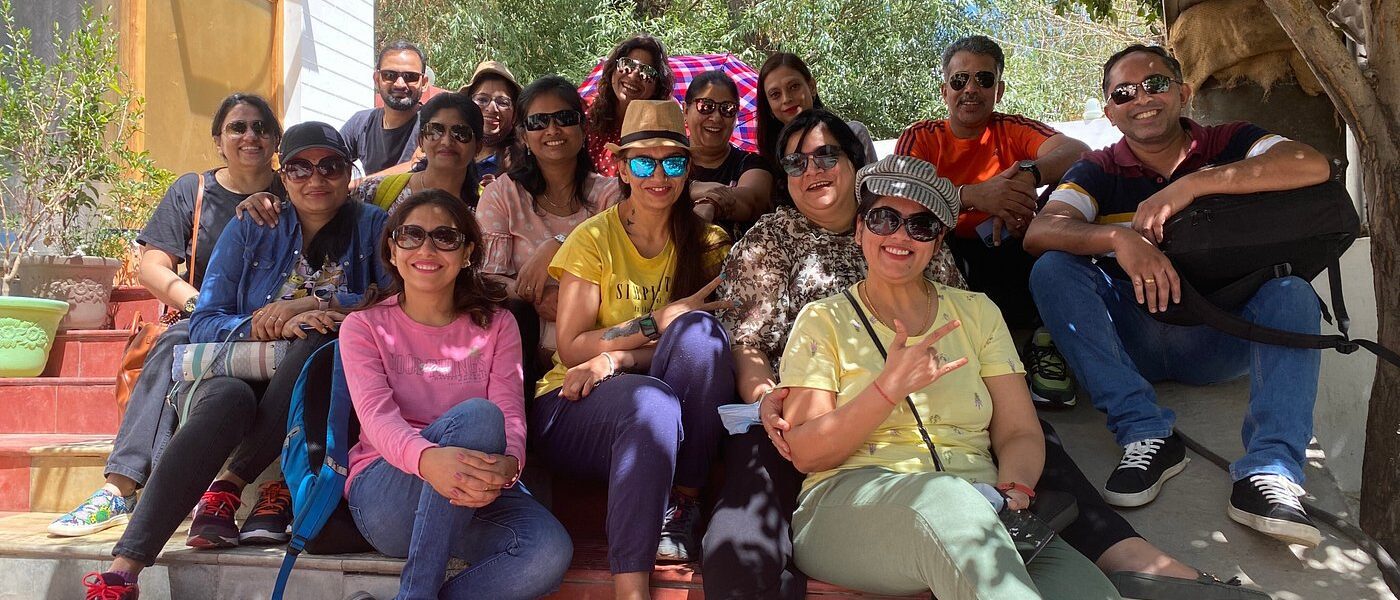Ladakh trekking homestays offer a unique way to experience this stunning region. Nestled in the Himalayas, Ladakh is a destination like no other, providing not only breathtaking landscapes but also opportunities to immerse yourself in local culture. One of the best ways to experience this is by staying in homestays while trekking through its remote valleys and villages. Ladakhi homestays provide trekkers with the chance to connect with local families, learn about traditional ways of life, and contribute to sustainable tourism. In this blog, we’ll explore the benefits of choosing homestays, the best trekking routes with homestay options, and tips for making the most of your experience.
Why Choose Homestays on Your Ladakh Trekking Journey?
Authentic Ladakhi Experience
When trekking through Ladakh, staying in a homestay offers you an authentic glimpse into the lives of the locals. You’ll sleep in traditional Ladakhi homes, often built from mud-brick and stone, and wake up to the sound of the Himalayas. By sharing a home with Ladakhi families, you’ll experience the region’s unique customs, traditions, and ways of life in ways that hotels and guesthouses cannot offer.

“Staying in a homestay was the highlight of my Ladakh trek. I learned how to make butter tea and got to chat with my host family about their daily life in the mountains.”
— Emma Foster, Teacher, USA
Cultural Immersion Through Homestays
Homestays provide an unparalleled opportunity for cultural exchange. You’ll eat traditional Ladakhi meals like thukpa (noodle soup) and momos (dumplings), often made with locally sourced ingredients. Staying with Ladakhi families lets you participate in their day-to-day activities, from cooking to farming. This cultural immersion is invaluable, giving you a richer, more personal trekking experience.
“The homestays allowed me to connect with the locals in a way I never expected. They welcomed me into their home and shared their stories, making my trek feel more meaningful.”
— Lars Madsen, Engineer, Denmark
Eco-Friendly and Sustainable Tourism in Ladakh
Choosing homestays over conventional hotels not only benefits you as a traveler but also promotes sustainable tourism in Ladakh. Homestays are eco-friendly accommodations, often powered by solar energy and reliant on natural resources. By staying in these local homes, you are supporting the local economy and helping preserve Ladakh’s pristine environment.
Many Ladakhi villages practice sustainable farming, and some homestays even provide home-grown food. This form of tourism ensures that your trekking journey leaves a minimal environmental footprint, aligning with the region’s ethos of responsible tourism.
Best Trekking Routes in Ladakh with Homestay Options
Markha Valley Trek: A Cultural Experience
The Markha Valley Trek is one of Ladakh’s most popular trekking routes, renowned for its dramatic landscapes and rich cultural experiences. Along this trail, you’ll find several villages such as Rumbak and Hemis where homestays are available. Staying with local families in these remote villages lets you learn about their unique agricultural practices and enjoy their warm hospitality.

“On the Markha Valley trek, my homestay in Rumbak was unforgettable. The family treated me like one of their own, sharing stories and even teaching me a few Ladakhi words.”
— Sophie Zhang, Photographer, Australia
| Village |
Approx. Altitude (m) |
Homestay Availability |
Distance from Leh (km) |
| Rumbak |
3,850 |
Yes |
40 |
| Skiu |
3,350 |
Yes |
50 |
| Markha |
3,715 |
Yes |
60 |
Sham Valley Trek: The Easier Homestay Trek
For trekkers looking for a less strenuous journey, the Sham Valley Trek offers a perfect combination of stunning landscapes and cultural immersion. The villages along the way, such as Likir and Yangthang, offer comfortable homestays where you can enjoy traditional meals and a cozy atmosphere. This trek is ideal for beginners or those who want a more relaxed pace while still getting the chance to connect with locals.
Offbeat Ladakh Trekking Routes with Village Homestays
If you’re looking for something more off the beaten path, consider treks in the Zanskar Valley or the Chadar Trek (Frozen River Trek). Though more remote, these treks offer a handful of homestay options in isolated villages, allowing you to experience the true spirit of Ladakh. Staying in these remote Ladakh village homestays will introduce you to Ladakh’s more secluded communities.
“The Zanskar Valley trek was challenging, but staying with local families along the way made it so much more rewarding. I learned so much about their way of life in such a harsh environment.”
— Thomas Müller, Scientist, Germany
What to Expect from Ladakhi Homestays
Traditional Ladakhi Homes and Architecture
Ladakhi homes are typically built using locally sourced materials like mud, stone, and wood. These homes are designed to withstand the harsh climate, with thick walls to keep the interiors warm during cold nights. The simple yet functional design of Ladakhi homes offers a cozy, inviting atmosphere that makes you feel right at home. You’ll often find that these homes have a central kitchen, where much of the socializing happens, giving you a chance to bond with your hosts.
“The architecture of the homestays was fascinating. The thick walls kept us warm, and the cozy kitchen was always the heart of the home, filled with warmth and laughter.”
— Amitabh Singh, Architect, India
Local Ladakhi Cuisine: A Culinary Adventure
One of the most delightful parts of staying in a Ladakhi homestay is the food. The meals are simple but hearty, often prepared using fresh ingredients from the family’s own farm. Butter tea, tsampa (roasted barley flour), and momos are some of the staples you’ll encounter. Don’t be surprised if your hosts invite you to help in the kitchen—it’s all part of the immersive experience.

“I never imagined that I’d be making momos with my host family in Ladakh. It was such a personal and fun way to connect with the locals.”
— Marie Dupont, Chef, France
Connecting with Locals and Building Relationships
The beauty of homestays lies in the relationships you form with the local families. Whether it’s sitting by the stove sharing stories or helping with daily chores, homestays allow you to forge meaningful connections with the people of Ladakh. These interactions provide insight into their traditions, religious beliefs, and way of life in the high mountains.
“It felt like I was leaving friends behind when I left the homestay. We shared so many wonderful moments during my trek.”
— Gabriella Rossi, Student, Italy
How to Find and Book Homestays for Your Ladakh Trek
Booking Ladakh Homestays Through Local Networks
Finding and booking homestays in Ladakh is quite straightforward, especially when done through local trekking agencies or guides. Many local operators offer homestay-based trekking packages that include meals and accommodations. Additionally, several online platforms now offer listings for Ladakhi homestays, but to ensure the most authentic experience, it’s often best to arrange your stay through local networks.
Benefits of Staying in Homestays vs. Guesthouses
While guesthouses and hotels offer more conventional accommodations, homestays provide a more immersive and culturally enriching experience. Homestays are usually more affordable and offer direct insight into Ladakhi culture. The personal attention you receive from hosts often leads to memorable interactions that simply aren’t possible in a more commercial setting.
Tips for a Comfortable Homestay Experience
To ensure a comfortable stay, it’s important to be prepared. While most homestays provide basic amenities, such as bedding and meals, it’s a good idea to bring personal items like toiletries, warm clothing, and small gifts for your hosts. Engaging with your hosts, being respectful of their customs, and showing interest in their lifestyle will make your stay more enjoyable and memorable.
How Homestays Support Ladakh’s Sustainable Tourism
Supporting Local Communities Through Homestays
By choosing to stay in homestays, you are directly contributing to the local economy. The income generated from homestays helps Ladakhi families sustain their livelihoods, especially in remote areas where employment opportunities are scarce. This form of tourism empowers local communities, preserves cultural traditions, and creates a positive impact on both residents and visitors.
Environmentally Friendly Accommodations
Homestays are often more environmentally friendly than larger hotels. Many Ladakhi homestays rely on solar energy for electricity and heating, and they use locally grown food, reducing the carbon footprint of your stay. This makes homestays an excellent option for trekkers who are mindful of their environmental impact.

FAQs About Homestays on Ladakh Trekking Routes
What is the cost of staying in a homestay during a trek in Ladakh?
Prices typically range from $10 to $30 per night, depending on the village and location. This usually includes meals and lodging.
How do I ensure my homestay is authentic?
Book through local trekking guides or trusted networks. Look for family-run homestays rather than commercially operated ones.
What should I bring for a homestay experience?
Bring personal toiletries, warm clothing, and small gifts for your hosts. Engage with the hosts and show interest in their culture for a deeper connection.
Are Ladakhi homestays comfortable for all trekkers?
Homestays are cozy, but basic. Most offer simple amenities and meals, making them perfect for trekkers looking for a cultural immersion rather than luxury.
Can I arrange a homestay once I start trekking?
Yes, many trekkers book homestays directly through local networks or guides during their trek. It’s common to find homestays in villages along popular routes.
What are the cultural norms to follow when staying with a Ladakhi family?
Respect local traditions, remove shoes when entering the home, and participate in family meals. Being polite and following the hosts’ routines is appreciated.
Ladakh trekking homestays
Ladakh trekking homestays | The journey through Ladakh mirrors the very essence of unraveling unknown horizons, as its dramatic landscapes and unique cultural identity awaken the deepest sense of wonder and exploration. Ladakh trekking homestays delves into this realm where inner peace intertwines with the wild, untouched beauty of Ladakh. From the snow-capped peaks to the serene monasteries, every step in Ladakh is a step toward self-discovery. The mountains, ancient paths, and unspoken mysteries stretch before travelers, offering a meditative experience where each encounter feels both effortless and transformative. Whether it’s trekking across remote valleys or sitting quietly beside a sacred lake, Ladakh invites those who seek a deeper connection to the natural and spiritual world.

Ladakh trekking homestays
The monasteries of Ladakh stand as living monuments to the region’s profound spiritual heritage. With origins dating back over a thousand years, these ancient structures are both places of worship and repositories of art, culture, and wisdom. Hemis Monastery, one of the largest in Ladakh, is renowned for its annual festival, featuring colorful mask dances performed by monks. The history of these monasteries reflects Ladakh’s role as a crossroads between India, Tibet, and Central Asia, where religious and cultural influences have intertwined over the centuries.
The Tibetan Buddhist influence is especially evident in the architecture and daily life of the monks. Prayer wheels, intricate murals, and the soft hum of chants fill the air as visitors explore the monastery grounds. Each monastery, from the remote Lamayuru to the awe-inspiring Thiksey, offers a window into the spiritual heart of Ladakh. These centers of meditation, learning, and community life continue to thrive, preserving traditions that have shaped Ladakh for generations.
Why Visit Ladakh for Ladakh trekking homestays?
Ladakh is a destination that transcends mere travel. It offers a journey that touches both the outer and inner landscapes, making it a perfect setting for those who seek to unravel their own unknown horizons. The region’s breathtaking scenery—from towering mountain ranges to hidden valleys—provides not just an escape but a space for contemplation and growth. Ladakh’s culture, deeply rooted in Buddhist practices, invites visitors to reflect on their own lives and the world around them.
Ladakh’s people, known for their warmth and hospitality, add to the richness of the experience. Villages like Sumda Chun and the legendary Nubra Valley introduce travelers to a way of life that is intricately connected to nature and spirituality. Staying in local homestays allows for immersive experiences where one can learn about traditional Ladakhi customs, share meals made from local produce, and participate in community rituals.

Beyond its natural beauty, Ladakh offers a unique opportunity to explore oneself. The vastness of the region’s plateaus and the clarity of its skies seem to mirror the vastness of the human spirit. Whether it’s standing atop a mountain pass at 18,000 feet or meditating in a centuries-old monastery, Ladakh helps unravel the unknown horizons within each traveler.
Finding the Best Ladakh trekking homestays in Ladakh
Finding the best places in Ladakh to experience “Ladakh trekking homestays” involves venturing off the beaten path. Ladakh’s lesser-known treks, such as those leading to secluded monasteries or high-altitude lakes, offer unparalleled opportunities for solitude and reflection. The Markha Valley trek, for instance, takes travelers through verdant valleys, ancient villages, and high-altitude passes, allowing for both physical and spiritual exploration.
Ladakh’s iconic lakes, including Pangong Tso and Tso Moriri, are ideal spots for quiet contemplation. Their still waters reflect the sky, creating a mesmerizing landscape that feels timeless and infinite. Sitting beside these lakes, especially at dawn or dusk, brings an overwhelming sense of peace and connection with nature.

For those interested in Ladakh’s spiritual heritage, exploring monasteries such as Alchi, Phyang, or Diskit can be a transformative experience. These sites are not just places of worship but also centers of art, philosophy, and wisdom. Visiting these monasteries, with their ancient murals and intricate statues, offers insight into Ladakh’s rich cultural tapestry.
Ladakh’s Atmosphere and Ladakh trekking homestays
Ladakh’s atmosphere is unlike any other place on Earth. The stark contrasts between the rugged mountains and the serene, tranquil monasteries create an environment that feels both raw and sacred. The traditional decor in Ladakhi homes and religious sites reflects this balance, with mud-brick houses adorned with prayer flags and colorful thangkas (Buddhist paintings) that add warmth and spiritual meaning to the space.

The interiors of Ladakhi homes, often simple and functional, are filled with symbols of devotion. Small shrines dedicated to Buddhist deities are common, and the air is often fragrant with incense. The use of earthy materials, like stone and wood, along with brightly colored textiles, creates an inviting and peaceful space, perfect for relaxation and reflection.
Traditional Ladakhi Cuisine
Traditional Ladakhi cuisine is an integral part of the region’s identity, offering a unique blend of flavors that reflect its harsh climate and remote location. Hearty, warming dishes such as thukpa (noodle soup) and momos (dumplings) provide the sustenance needed to endure Ladakh’s cold temperatures. Skyu, a thick stew made with root vegetables and barley, is another staple of the Ladakhi diet, designed to nourish both body and spirit.

Drinks like butter tea, made with yak butter and salt, are a must-try for anyone visiting Ladakh. This rich, savory drink is not only warming but also hydrating, making it essential for those venturing into the high-altitude regions of Ladakh. Chang, a local barley beer, is often enjoyed during festivals and community gatherings, adding a sense of joy and camaraderie to any occasion.
Live Cultural Ladakh trekking homestays in Ladakh
Ladakh is home to a vibrant cultural scene, with festivals and live performances held throughout the year. The Hemis Festival, which celebrates the birth of Guru Padmasambhava, is one of the largest and most famous events in the region. Monks dressed in elaborate costumes perform cham dances, which depict the triumph of good over evil. The energy of the festival, with its bright colors, rhythmic music, and elaborate rituals, draws visitors from around the world.
Other local festivals, such as the Losar (New Year) and Ladakh Festival, provide visitors with the chance to witness traditional dance, music, and crafts that have been passed down through generations. These events are more than just entertainment; they are a celebration of Ladakh’s rich cultural heritage and its deep connection to the spiritual world.
Trekking and Outdoor Activities Ladakh trekking homestays
Ladakh is a trekker’s paradise, offering some of the most stunning and challenging routes in the world. From the famous Ladakh trekking homestays, which follows the frozen Zanskar River, to lesser-known routes like the Sham Valley or Nubra Valley treks, Ladakh’s landscape offers endless possibilities for adventure and discovery. The high-altitude passes, such as Khardung La and Chang La, offer breathtaking views of snow-capped peaks and sprawling valleys.

Wildlife enthusiasts will also find Ladakh trekking homestays to be a haven for rare species such as the snow leopard, Himalayan blue sheep, and the Tibetan wild ass. Winter expeditions to spot the elusive snow leopard in the Hemis National Park are gaining popularity among wildlife photographers and conservationists alike.
The Importance of Preserving Ladakh’s Ladakh trekking homestays
Ladakh’s rich cultural and environmental Ladakh trekking homestays is under increasing threat from climate change and mass tourism. Preserving this unique region requires careful attention to sustainable tourism practices. Choosing eco-friendly accommodations, supporting local businesses, and participating in community-led conservation efforts are just a few ways that visitors can contribute to the preservation of Ladakh’s natural and cultural heritage.
Ladakh’s people have a long history of living in harmony with their environment, practicing sustainable agriculture, and maintaining a deep spiritual connection to the land. Visitors are encouraged to follow the same principles, leaving no trace and respecting the fragile ecosystems that make Ladakh so special.
Etiquette and Tips for Visiting Ladakh trekking homestays
Before visiting Ladakh, it’s essential to understand and respect the region’s customs and traditions. As a deeply spiritual place, Ladakh requires visitors to dress modestly, especially when visiting monasteries or attending religious ceremonies. Always ask for permission before taking photographs inside monasteries or of local people.
Medical Ladakh trekking homestays
Spa trail Ladakh trekking homestays
Ladakh trekking homestays

When Ladakh trekking homestays, remember to stay on designated paths to avoid damaging fragile ecosystems. Tipping is appreciated but not expected in most settings, and it’s important to carry cash, as many remote areas do not accept credit cards. Lastly, be mindful of altitude sickness and take the necessary precautions when traveling to higher elevations.
Conclusion: Enjoying Ladakh trekking homestays in Ladakh
Ladakh is a place where the physical and spiritual worlds converge, offering travelers a journey unlike any other. Whether you’re trekking across high-altitude deserts, exploring ancient monasteries, or simply sitting in quiet reflection by a mountain lake, Ladakh invites you to unravel your own unknown horizons. By respecting the region’s traditions and practicing sustainable tourism, you help ensure that Ladakh’s beauty and cultural richness will be preserved for future generations to explore and enjoy.












